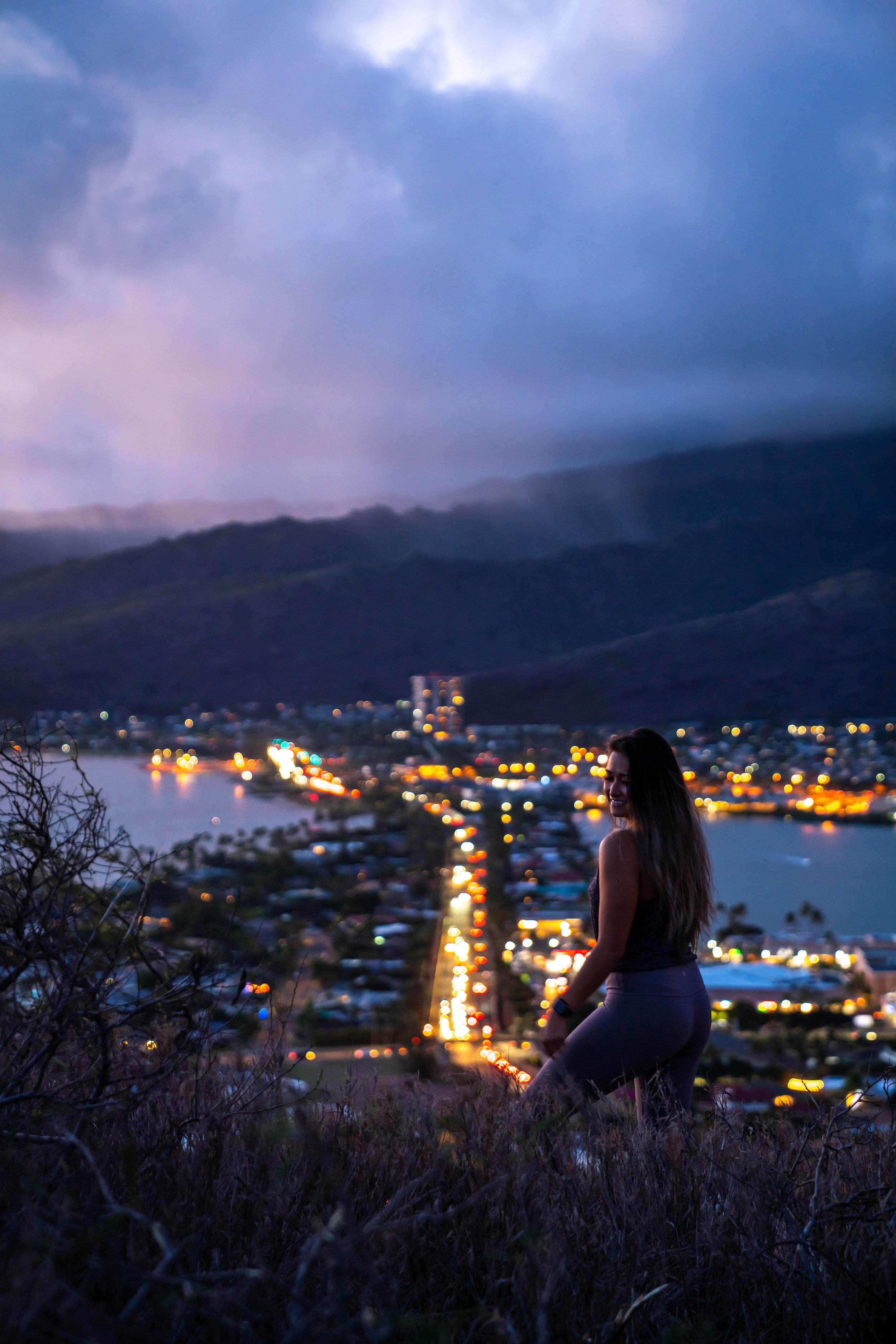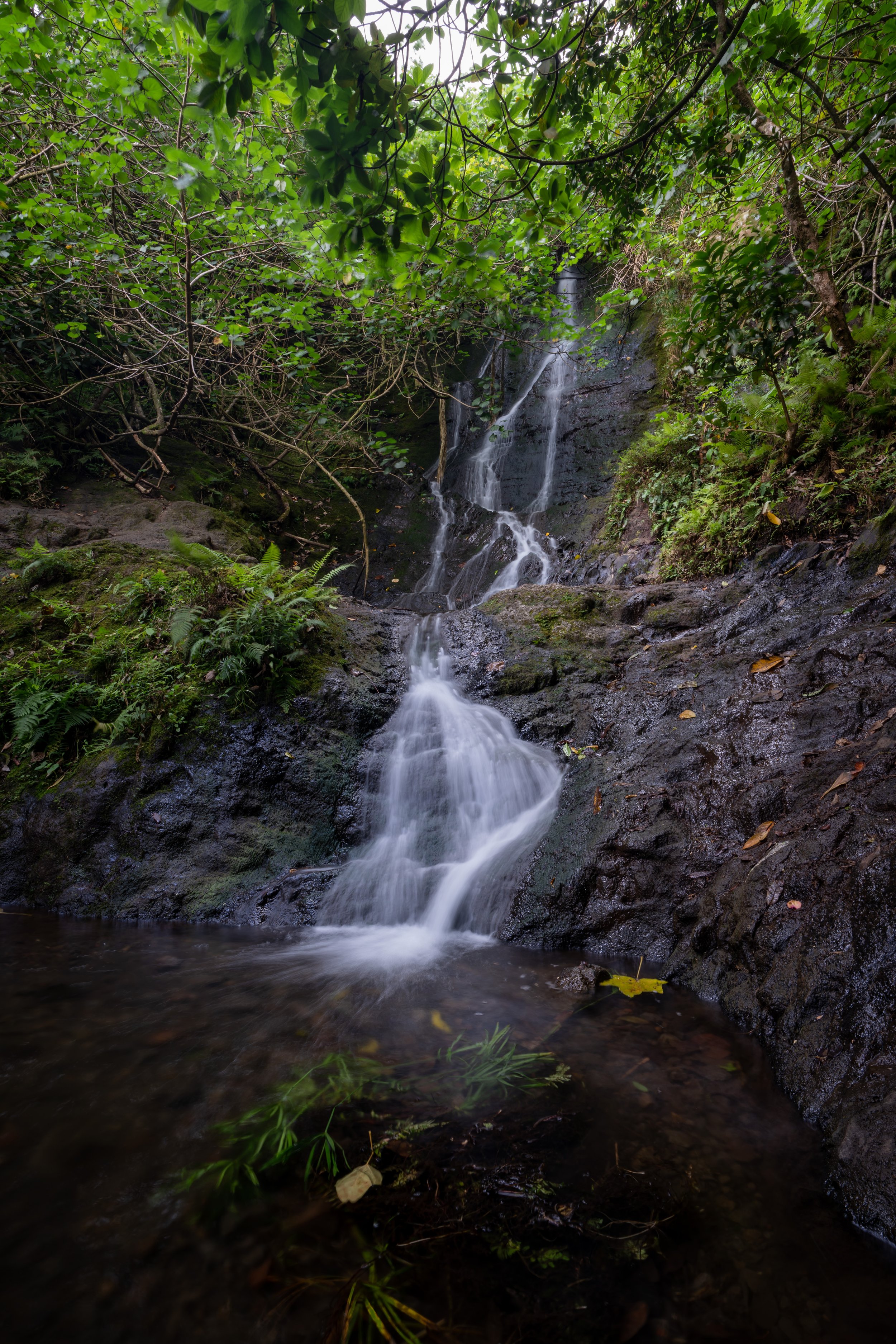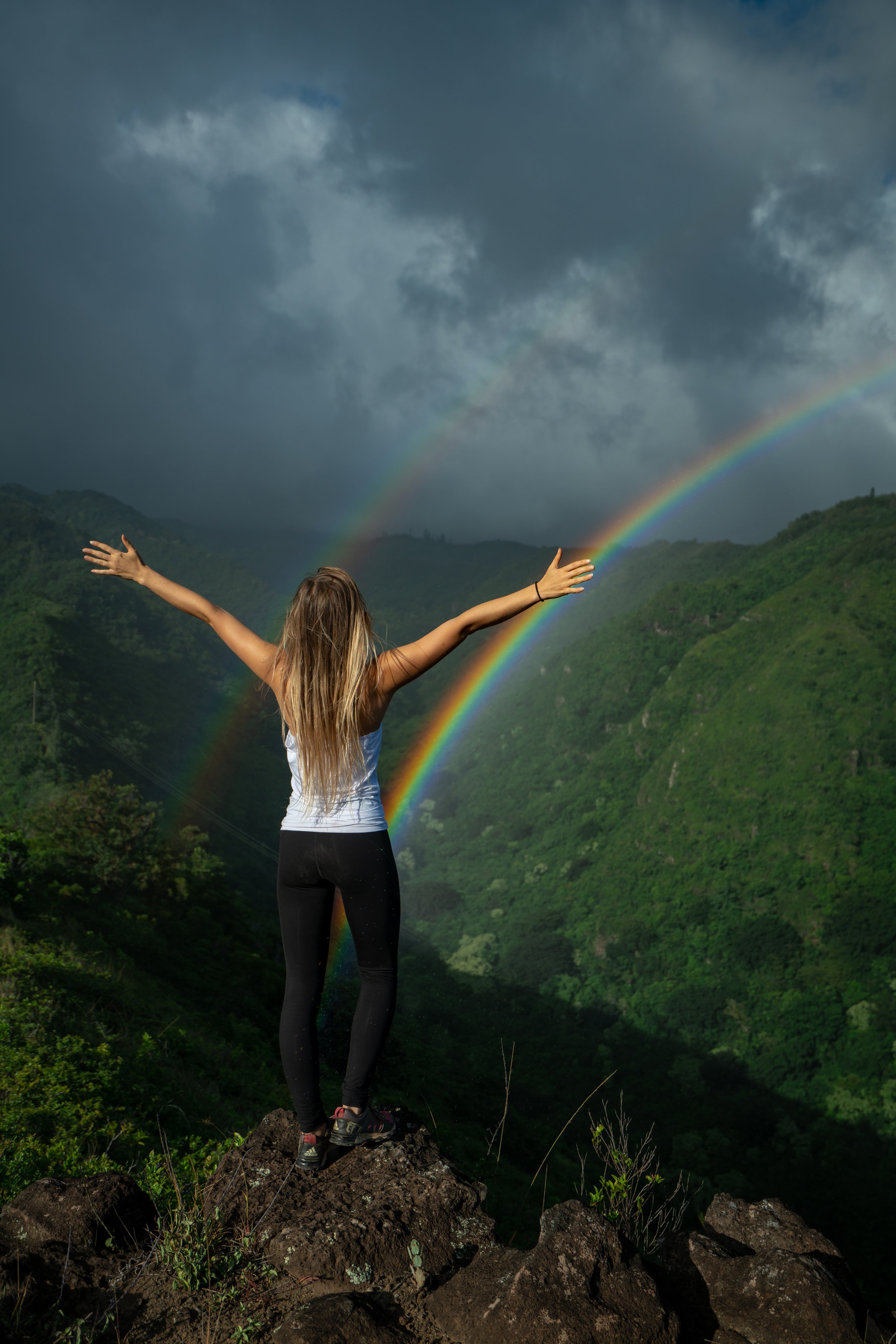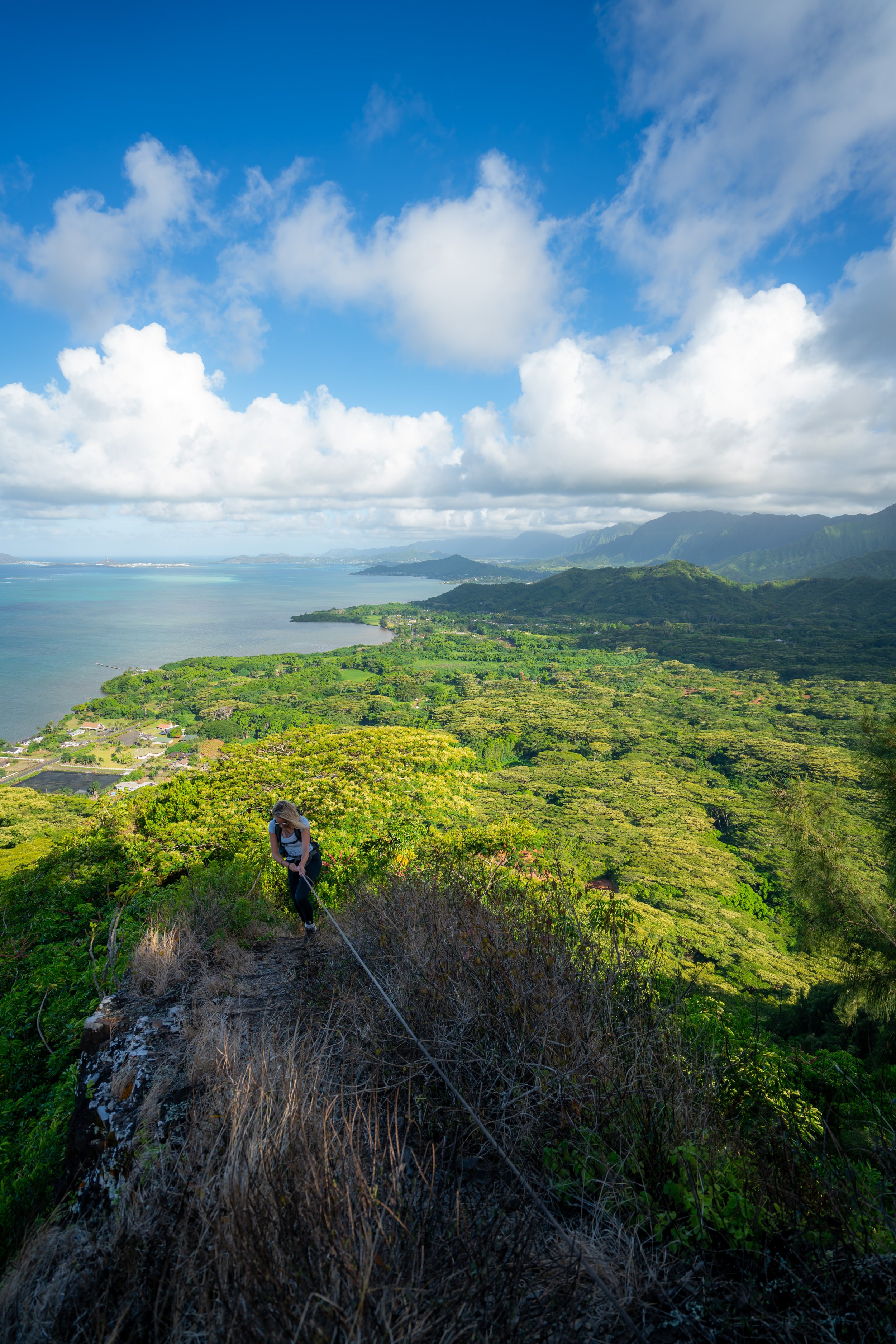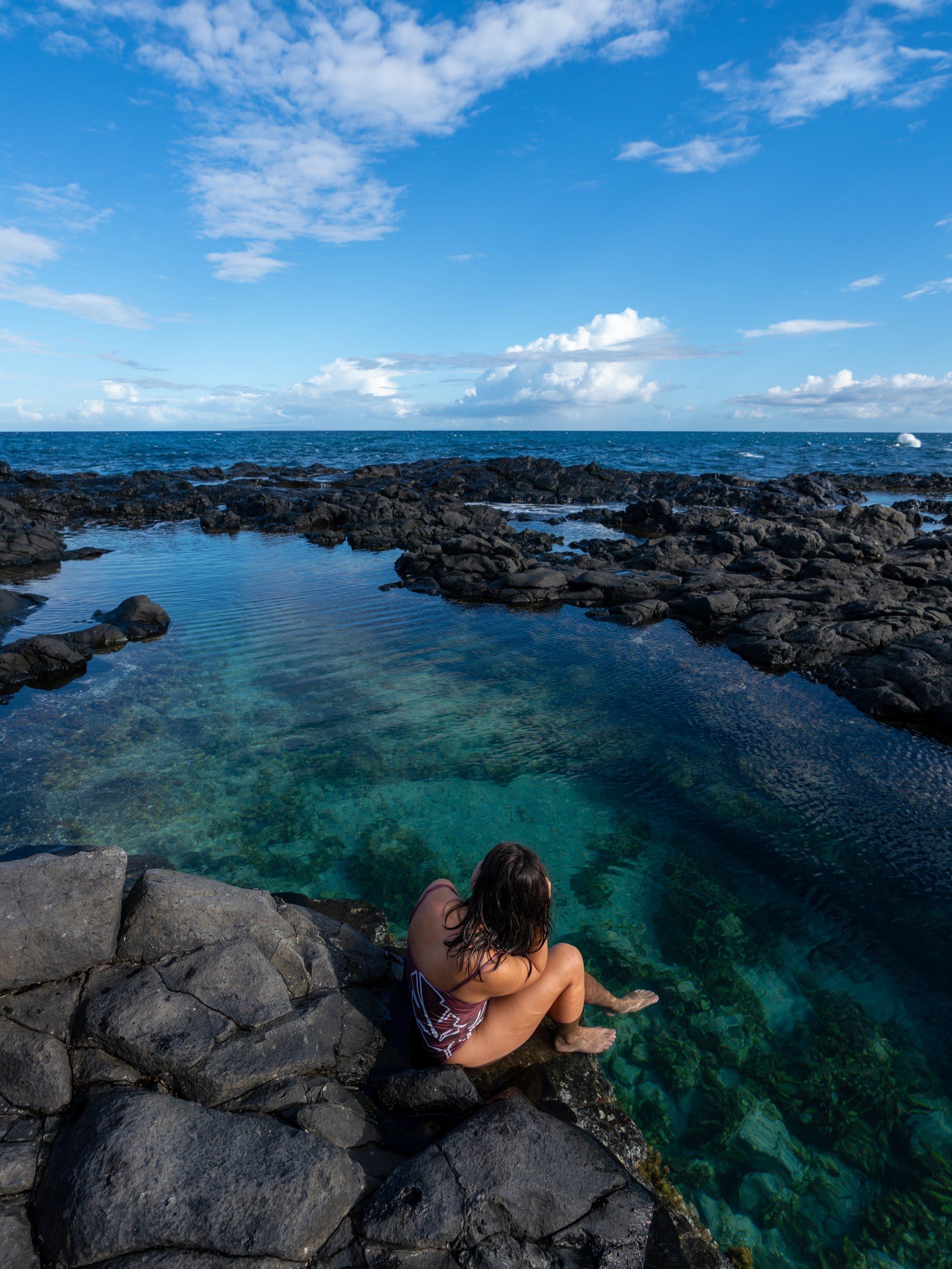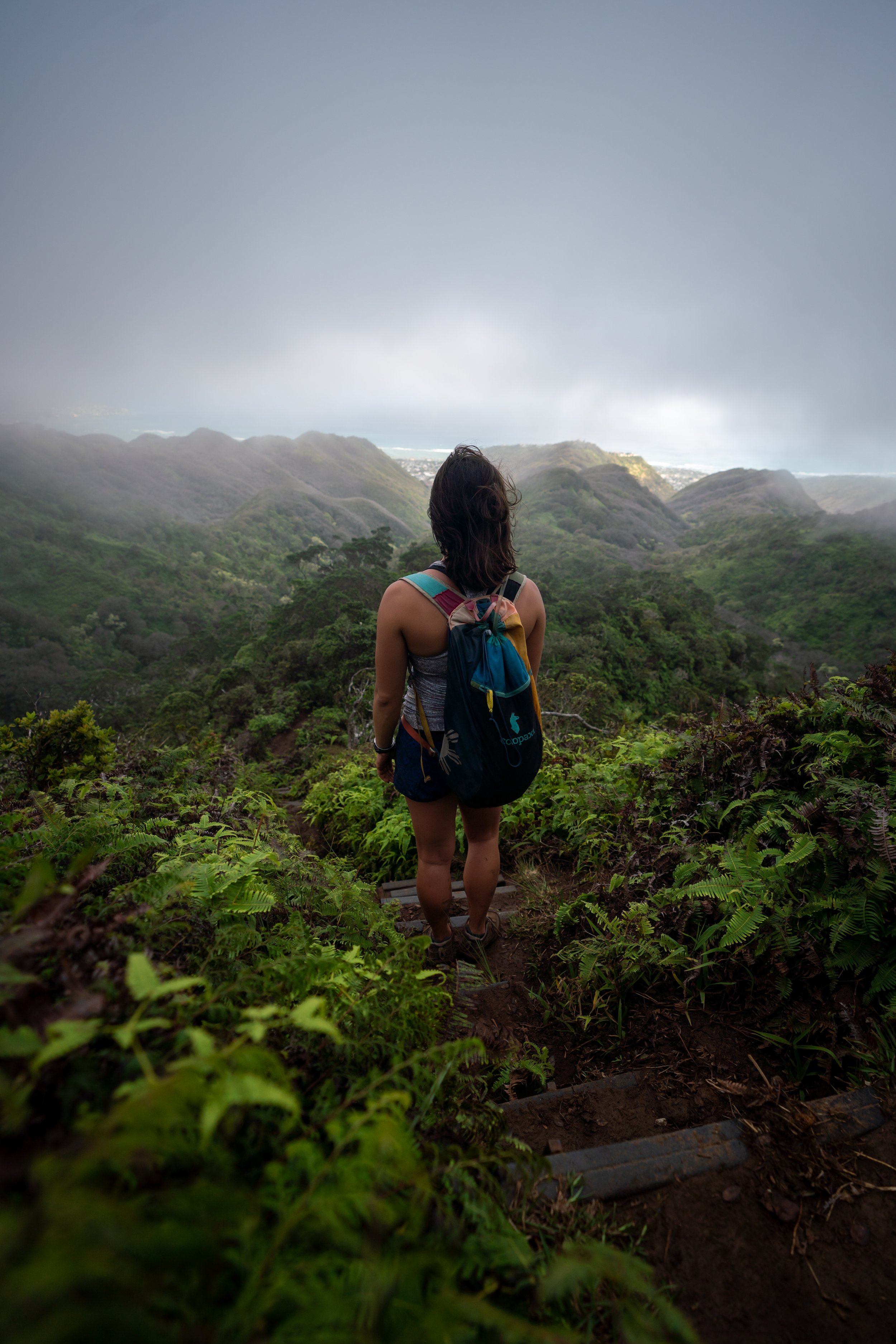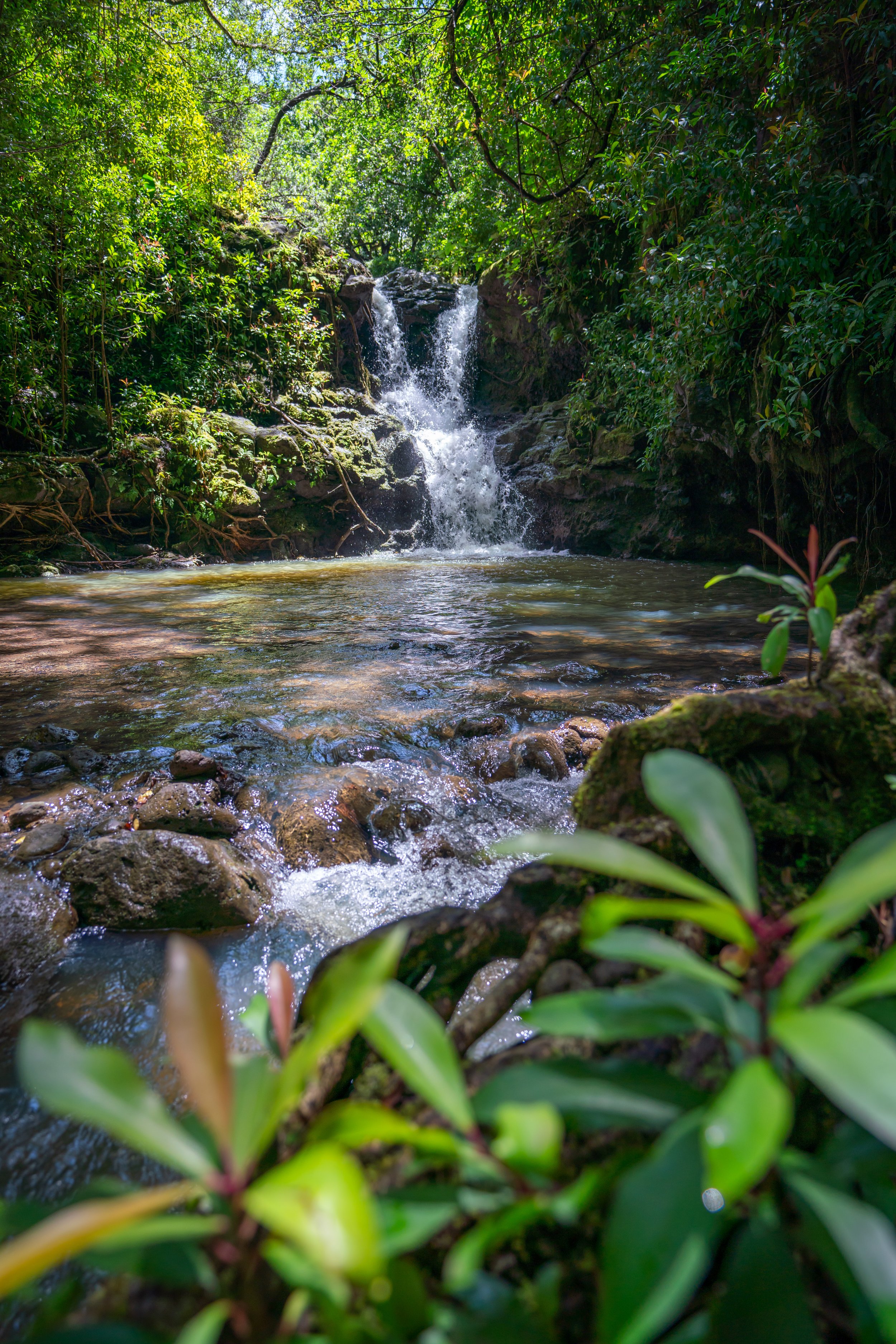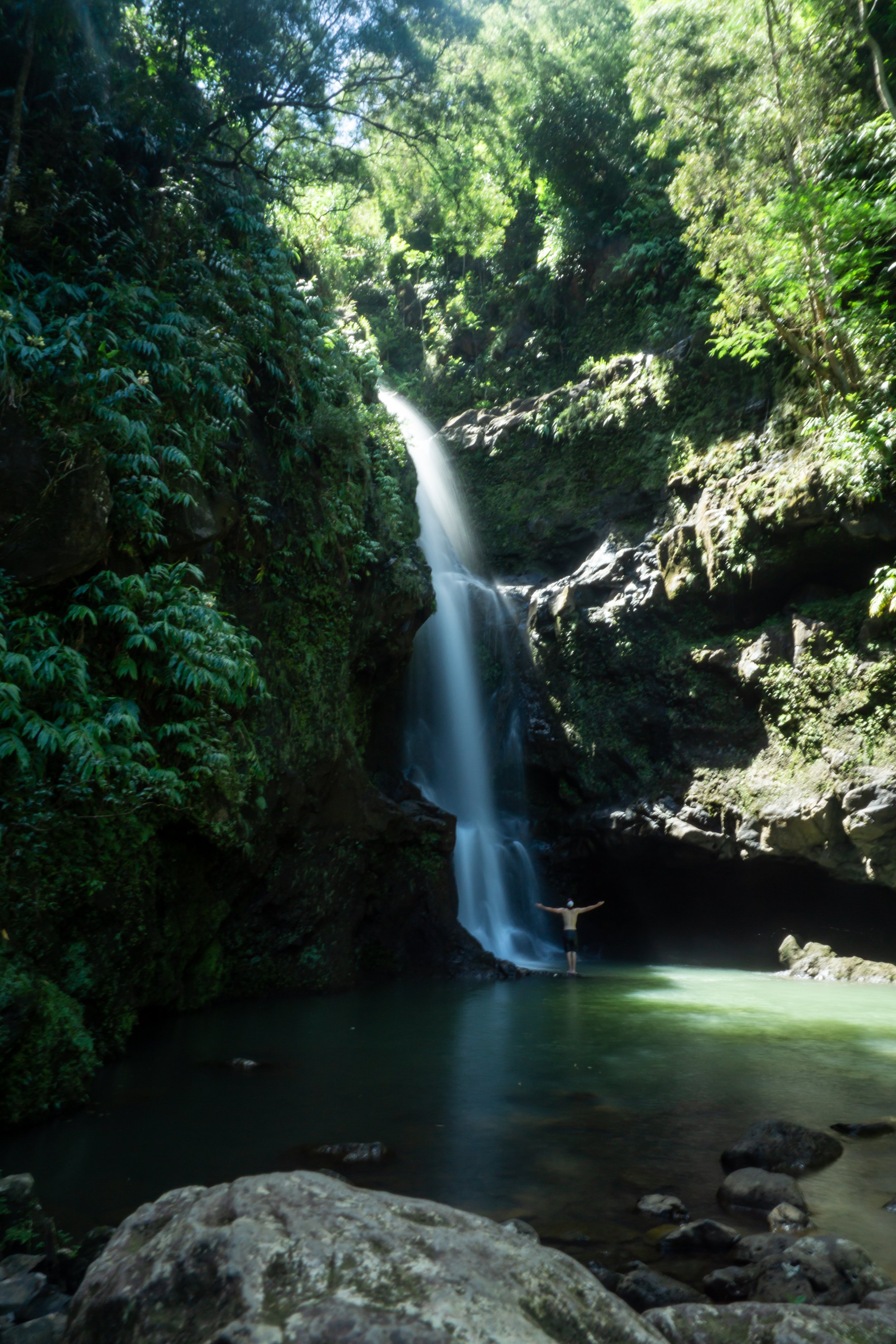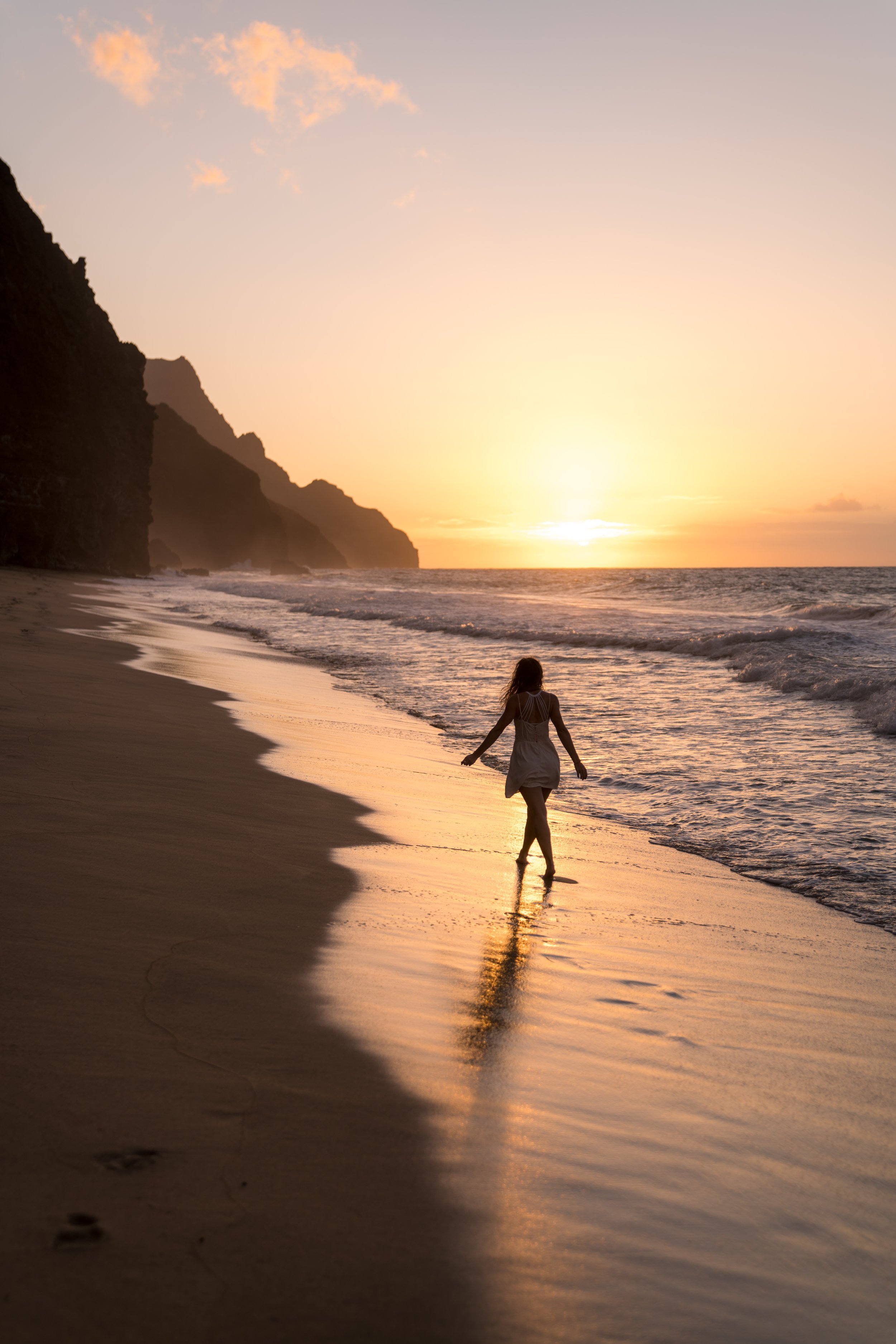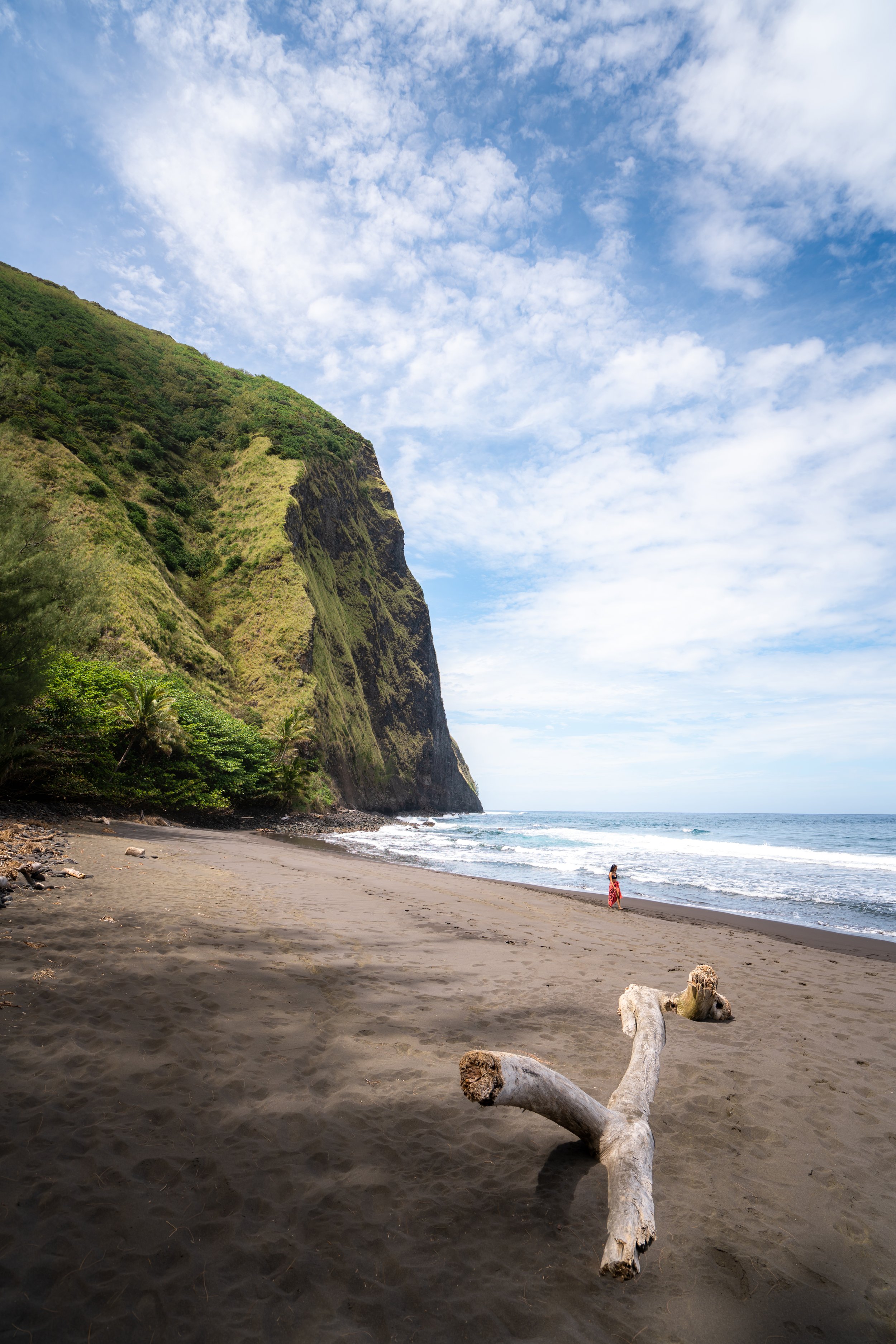Hiking the Puʻu Māʻeliʻeli Trail (Digging Hill Pillbox) on Oʻahu, Hawaiʻi
Distance: 2.2 miles / 3.5 km
The Puʻu Māʻeliʻeli Trail, also known as the Digging Hill Pillbox Trail, is a little lesser-known Oʻahu secret on the east side of the island.
I say this because other, more popular east Oʻahu trails, such as Crouching Lion and the Lanikai Pillbox Trail, tend to overshadow Pu’u Māʻeliʻeli—a trail I see as a beautiful local hidden gem!
That being said, the Puʻu Māʻeliʻeli Trail to the pillbox at the top is a favorite among locals, especially when it comes to hiking the trail for sunrise. Therefore, I ask that you please do what you can to minimize your impact and not draw negative attention to this fun, little-known Oʻahu adventure!
Puʻu Māʻeliʻeli Trailhead Parking
Parking for the Digging Hill Trail is located on East Hui ʻIwa Street, as close to the McDonalds as you can find parking.
On a different note, please be quiet if you plan to hike the Puʻu Māʻeliʻeli Trail for sunrise, as this local trail begins adjacent to a residential area and does not need negative attention drawn toward the hiking community.
Google Maps Directions: Puʻu Māʻeliʻeli Trailhead
My Hawaiʻi Hiking Checklist
Osprey 3L Water Bladder - The Osprey 3L water bladder is the most universal hiking and backpacking water bladder on the market, and it’s my go-to because of the slide-off seal that allows it to be quickly filled from the top. Additionally, individual parts are easily replaceable, such as the bite valve.
Blister / Heel Protectors - I swear by these cheap, amazing heel protectors to prevent blisters for nearly every kind of hiking and backpacking that I do!
Black Diamond Headlamp - Personally, I recommend the Black Diamond Storm because it is one of the brightest, lightest, and longest-lasting headlamps on the market—and trust me, the weight-to-battery-life ratio really does matter!
Hiking / Trail Running Shoes - Depending on the type of trail, I prefer to use either the Keen Targhee for longer, more rugged hiking or the HOKA Zinal Trail-Running Shoe for lighter, less intense trails. In either case, both have been amazing to me for many years across countless environments, and both can be found in men’s and women’s sizes. - (Men’s Keen / Women’s Keen) (Men’s HOKA / Women’s HOKA)
Waterproof Rain Shell - You never know when it may rain, and I’ve learned over the years that a rain shell is far better than a rain jacket. By this, I mean that it’s best to have something that the water will roll right off of, which is why I recommend the Patagonia Torrentshell 3L available in both men’s and women’s sizes.
High SPF Sunscreen - Packing high-SPF sunscreen is a must for long days outside!
Walking to the Trailhead
From the parking area on East Hui ʻIwa Street, the Puʻu Māʻeliʻeli Trail begins off Kahekili Highway in the eastbound direction.
I always find it safest to walk the short 0.1-mile (0.2 km) stretch along Kahekili Highway on the inside of the guardrail.
Hiking the Puʻu Māʻeliʻeli Trail
This is the true Puʻu Māʻeliʻeli Trailhead, which begins on the left-hand side, immediately following the residential community.
Google Maps Directions: Puʻu Māʻeliʻeli Trailhead
After the highway, the Puʻu Māʻeliʻeli Trail begins climbing uphill, gaining roughly 550 ft. (168 m) from the trailhead to the summit.
This hill is the first of three notable hills on the Puʻu Māʻeliʻeli Trail, but it is, without a doubt, the longest and hardest hill on the hike to the top—especially if it has rained recently!
With that in mind, this very muddy and slippery hill will likely get whatever you’re wearing dirty unless you happen to get lucky with a bright, dry, and sunny day like this!
Some hikers may prefer to carry trekking poles for this long, slippery section of the trail, which only seems to get worse as more traffic frequents the Puʻu Māʻeliʻeli Pillbox.
After the first hill, the Puʻu Māʻeliʻeli Trail levels off significantly, traversing a number of less steep rolling hills before reaching the final two steep hills closer to the summit.
At this split, go left to stay on the Puʻu Māʻeliʻeli Trail.
This is where the trail to right meets back up with the true Puʻu Māʻeliʻeli Trail, which is typically only use by hikers who went the wrong way at the split above.
Within the first half of the hike, the summit of Puʻu Māʻeliʻeli becomes visible from the trail, which is one of the only times it can be seen, as the majority of the hike passes through a fairly dense Strawberry Guava-Koa Haole-Ironwood canopy.
These Palaʻā ferns are among the very few native species that can be seen along the Puʻu Māʻeliʻeli Trail, which hopefully helps illustrate how invaded much of Hawaiʻi’s low-lying forests are!
Yes, essentially everything you’re looking at in these photos, including these Agave plants, are not supposed to be in Hawaiʻi.
At a few different points along the Puʻu Māʻeliʻeli Trail, Noni can be seen growing, which is a canoe plant—meaning it was brought to Hawaiʻi by the original Polynesians with the intent of cultivating familiar crops when they discovered a new island.
Through these middle sections of the hike, the Puʻu Māʻeliʻeli Trail continues climbing, but these areas are not nearly as steep as the hills at the beginning and end of the hike.
Puʻu Māʻeliʻeli-Hui ʻIwa Junction
At roughly 0.8 miles (1.3 km), the Puʻu Māʻeliʻeli Trail splits, with an alternative route that leads down to the neighborhoods near the beginning.
However, if you’re visiting Oʻahu, I don’t recommend following these side trails, as they lead to areas of private property at the bottom.
This is the bottom of the second of the three steep hills on the Puʻu Māʻeliʻeli Trail, with the final hill located a short distance from the top of this one.
At the top of the second hill, the trail levels out for about 0.1 miles (0.2 km) before reaching the third hill shortly ahead.
Be careful not to hit your head on all these low-hanging Christmas Berry trees.
This is the base of the third and final significant hill, which leads to the summit of Puʻu Māʻeliʻeli.
About halfway up the hill, this view opens up to the east, revealing notable summits such as Puʻu Kōnāhuanui, along with Tripler and the Stairway to Heaven (Haʻikū Stairs) on a clear day!
If you’re hiking up in the dark for sunrise, watch out for this post in the middle of the trail.
That said, I highly recommend packing a good headlamp, as it can be useful on Puʻu Māʻeliʻeli, along with countless other sunrise and sunset adventures, such as the Koko Crater Arch and the ʻEhukai Pillbox Trail.
Puʻu Māʻeliʻeli
After about 1.0 miles (1.6 km) from the trailhead, not including the walk along the highway, the Puʻu Māʻeliʻeli Trail reaches the summit, with the two main pillboxes located a short distance ahead.
Watch out for this hole in the ground, which is the first pillbox immediately following the summit sign.
Puʻu Māʻeliʻeli Pillbox
From the Puʻu Māʻeliʻeli Pillbox, places can be seen as far away as Kualoa Ranch and Mokoliʻi to the north, as well as Mt. Olomana and the Kalāheo Hills to the south.
In my experience, the Puʻu Māʻeliʻeli Pillbox can be one of the least crowded Oʻahu sunrise hikes, which is something that cannot be said about similar east Oʻahu adventures, like the Lanikai Pillboxes or the Crouching Lion Trail.
This is all to say that there’s always a great chance of hiking the Puʻu Māʻeliʻeli Pillbox Trail and having the summit entirely to yourself—especially on a weekday at sunrise!
Native Plants on the Puʻu Māʻeliʻeli Trail
Generally speaking, I can come up with a long list of native plants on most trails around Hawaiʻi, but since Puʻu Māʻeliʻeli is so low in elevation and close to urban areas, 99% of the trail is covered in non-native, invasive species like Shoebutton, Brazilian Pepper, and Juniper Berry.
That being said, the few native plants that I’ve noticed on the trail include Uluhe, Palaʻā, ʻUhaloa, and a rare ʻŌhiʻa lehua—if you know where to look.
If you would like to learn more about these and many other native Hawaiian plants from across the islands, I encourage you to check out my separate post linked below.
Read My Separate Post: Native Hawaiian Plant Guide
More Oʻahu Adventures
If you’re interested in reading about some more amazing Oʻahu adventures, check out my separate posts below!
Best Hotels & Restaurants in Waikīkī
If you’re trying to decided where to stay on Oʻahu, check out my top 10 list for the best resorts and restaurants in Waikīkī.
I break down what makes one hotel a better choice over another, so that you can find the best fit for your stay on the island.
Read My Separate Post: Best Waikīkī Hotels & Restaurants
HNL Airport-Hotel Shuttle
Prices on ride-share apps like Uber/ Lyft cannot beat the price of booking your hotel shuttle prior to arrival. I say this because there are additional fees for ride-share airport pick-ups at Honolulu Airport (HNL), which is why I recommend booking your transportation in advance using the options below.
Additionally, the last option below will go as far as the Ko ʻOlina Resorts on the West Side and Turtle Bay on Oʻahu’s North Shore!
Best Way to Book Rental Cars!
I travel quite a bit, and I know firsthand that finding a good rental car deal can be a challenge, but that’s why I recommend comparing all of your options with Discover Cars.
In short, Discover Cars is a well-known, reputable business that allows you to search for the best deal across companies, and they have the best full-refund cancellation policy I’ve ever seen, valid up to 72, or sometimes even 48, hours prior to your reservation!
Book Here: Discover Cars
Visiting Other Islands
If you are visiting Oʻahu or heading to another island, check out some of my personal recommendations for Oʻahu, Maui, Kauaʻi, Molokai, Lānaʻi, and Hawaiʻi Island (Big Island) in these separate posts.
If you’re trying to decide which island is right for your visit, check out my overview about each island in the post below.
Read My Separate Post: What is the Best Hawaiian Island to Visit?
What is the Best Time of Year to Visit Hawaiʻi?
The weather in Hawaiʻi can often appear to be warm and beautiful throughout the year, but in my experience, there is a lot more to consider when planning what time of year to visit the islands, such as what island you are considering, what sides of each island do you plan to stay, what activities are you most interested in, the wildlife, and countless other nuanced variables that can all impact the type of trip you can expect to have.
For these reasons, I highly recommend reading through my separate article to not only understand my thoughts regarding the best time of year to come to Hawaiʻi but also what you need to consider based on the time of year that you plan to visit.
Read My Separate Post: What is the Best Time of Year to Visit Hawaiʻi?
10 Best Tours & Excursions on Oʻahu
There are a lot of different tour options to choose from on Oʻahu, but to make it easier to decide, I made a list of my favorite tours because some things simply are better with a local guide!
Read My Separate Post: Best Tours on Oʻahu
Safety
All hikes in Hawaiʻi should not be compared to trails outside of the islands, and hikers should exercise due caution on every adventure, given that many are extremely dangerous.
By this, I mean that Hawaiʻi is known for hot, humid weather, steep, dramatic, and unstable cliffs, and flash floods, which can occur without warning. Therefore, it is important that you check the local forecast, understand the physical condition of your entire group, and pack sufficient food and water before attempting any adventure.
Disclaimer
All information provided on this blog is for informational purposes only and is not intended to be a substitute for information or advice from qualified professionals or managing agencies.
Noah Lang Photography LLC makes no representations or warranties regarding the accuracy or completeness of the information provided here, and readers should use their own discretion, judgement, and seek professional advice where it is appropriate.
Furthermore, Noah Lang Photography LLC shall not be held responsible for any injuries, lost individuals, or legal issues arising from the use of information provided on this website, and if applicable, the above safety disclaimer should be referenced to provide a generic overview of the risks involved.
All said, the content on this blog is for the sole use of Noah Lang Photography LLC, and unauthorized use or reproduction of this content is strictly prohibited.
Disclosure
This post is not sponsored.
However, some of the links in this post are affiliate links, which means that I may earn a small commission if a purchase is made through one of those links. This commission comes at no additional cost to you, and I only recommend products that I personally use and believe will add value to my readers. Thank you for your support, which enables me to continue creating more!
To read the full privacy policy, click here.

About This Blog
Noah Lang Photography, also known as @noahawaii, is 100% reader-supported!
I do not accept guest articles or sponsored content of any kind on my blog, which is why, if you enjoy the outdoor and travel content I create, please consider buying me a coffee!
I appreciate your support, which helps me continue to keep this blog alive!













